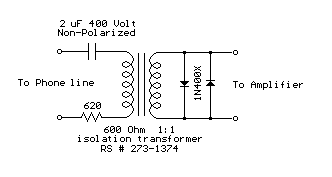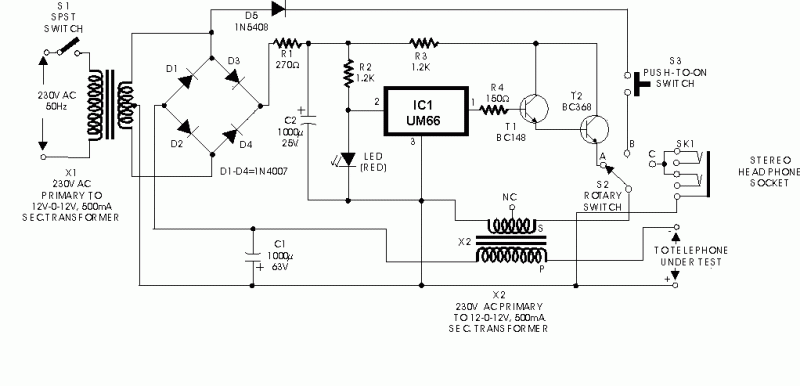
soft musical telephone ringer

The standard telephone bell can be quite bothersome, especially at night when disturbance is undesirable. The circuit presented here transforms the loud ringing bell into a gentle and pleasant musical tone.
This circuit utilizes a tone generator to replace the traditional bell sound with a melodic output, allowing for a more soothing notification when receiving calls. The core component of this design is the tone generator IC, such as the popular NE555 timer, configured in astable mode to produce a square wave signal at a frequency that corresponds to a musical note.
The circuit begins with the telephone line input, which is connected to a relay. The relay is activated when a call is received, closing the circuit and powering the tone generator. The output of the tone generator is then fed into a low-pass filter to smooth the square wave into a more musical tone. This filter can consist of a resistor and capacitor network, which can be adjusted to modify the frequency response and timbre of the sound produced.
Additionally, an audio amplifier may be incorporated to ensure that the output sound is audible without being harsh. The amplifier can be powered by a separate low-voltage supply to maintain safety and compatibility with the telephone line.
The final output can be connected to a small speaker or piezo buzzer, which will emit the pleasant tone when the phone rings. This design not only enhances the user experience by providing a more agreeable ringing sound but also can be customized by changing the component values to produce different musical tones or melodies.
Overall, this circuit effectively addresses the annoyance of traditional telephone bells, offering a simple yet effective solution for a more enjoyable auditory notification.The normal telephone bell, at times (specially during night when one does not want to be disturbed), appears to be quite irritating. The circuit shown here converts the loud sounding bell into a soft and pleasing musical tone.. 🔗 External reference
This circuit utilizes a tone generator to replace the traditional bell sound with a melodic output, allowing for a more soothing notification when receiving calls. The core component of this design is the tone generator IC, such as the popular NE555 timer, configured in astable mode to produce a square wave signal at a frequency that corresponds to a musical note.
The circuit begins with the telephone line input, which is connected to a relay. The relay is activated when a call is received, closing the circuit and powering the tone generator. The output of the tone generator is then fed into a low-pass filter to smooth the square wave into a more musical tone. This filter can consist of a resistor and capacitor network, which can be adjusted to modify the frequency response and timbre of the sound produced.
Additionally, an audio amplifier may be incorporated to ensure that the output sound is audible without being harsh. The amplifier can be powered by a separate low-voltage supply to maintain safety and compatibility with the telephone line.
The final output can be connected to a small speaker or piezo buzzer, which will emit the pleasant tone when the phone rings. This design not only enhances the user experience by providing a more agreeable ringing sound but also can be customized by changing the component values to produce different musical tones or melodies.
Overall, this circuit effectively addresses the annoyance of traditional telephone bells, offering a simple yet effective solution for a more enjoyable auditory notification.The normal telephone bell, at times (specially during night when one does not want to be disturbed), appears to be quite irritating. The circuit shown here converts the loud sounding bell into a soft and pleasing musical tone.. 🔗 External reference





